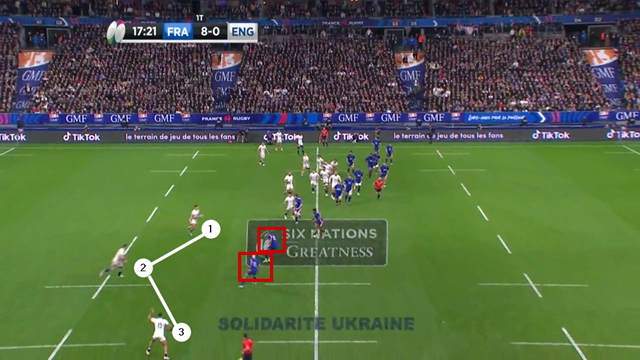The other day I found myself winding the clock back to the time when I first began to analyze rugby games, around the turn of the Millennium. Back in the day, we used to analyze matches recorded on VHS video, and the process of winding and rewinding and fast-forwarding, and trying (mostly in vain) to obtain a clear snapshot of the action, was an arduous one.
Videos had to be received from matches, then sent physically by post or by hand to waiting coaches. Reports often had to be returned by ‘snail mail’ too, and there was no opportunity to embed video clips within them.
A few years later, and the transition to DVD was received with some gratitude – not to say relief – but the real change did not occur until games could be streamed direct to a PC or laptop. At that stage, with the added benefit of on-board video editing and analysis tools, the game-within-a-game really did begin to change.
Now we have full-blown ‘live’ in-game analysis, with footage available from a number of revealing angles – overhead, wide-angle, behind the posts as well as the true ‘missionary’ pitch-side view! All of this information can be condensed and relayed to coaches while a match is still in progress.
Instant streaming has accelerated the speed of information transfer hugely, so that rugby now truly is a global game. What happens in the northern hemisphere is known immediately in the south, and vice versa. New ideas can now be assimilated, and copy-catting occur incredibly quickly.
Let’s take a look at how that freedom of information has affected areas like ball-carrying. Over the past couple of seasons, Eddie Jones’ England has been plagued by a lack of midfield power, with both of the Vunipola brothers out of favour, and their giant Samoan centre Manu Tuilagi seldom available for a run of games without an injury hiccup.
As Eddie Jones himself commented after the Six Nations game versus Italy,
“Just having a power-running centre would give us a different option.
“Everything we’re doing now is about trying to create opportunities through finesse and that’s through good running lines and passing.
“But to have someone who can take you forward quickly and engage two or three defenders then allows you to try and finesse in extra space which would be really useful to us.”
In the prolonged absence of Tuilagi, it is likely that the England analysts trawled the world for versions of ‘finesse’ which would help resolve this problem.
I suspect they found it in the use of Angus Bell by the New South Wales Waratahs in Super Rugby Pacific. The Waratahs also lack a huge ball-carrier in midfield or at number 8, so they decided to use their outstanding ball-carrying prop Angus Bell in a similar role instead.
Against the Brumbies, NSW dropped Bell into their backfield to return kicks with power:
They also trimmed their lineout to four or five-man, and deployed him as an extra centre in midfield:
Typically, you would expect a prop to be up on the line in the kick-chase and lifting a potential receiver at the lineout, but Bell’s role has shifted radically. And it works. Bell breaks the first tackle in the first instance and generates lightning-quick ball in the second.
The match between the Waratahs and Brumbies was played on 5th March. Two weeks later, in the final round of the Six Nations Eddie Jones had incorporated exactly the same idea into England’s game-plan against France. England employed their own loose-head prop, Ellis Genge, in the backfield on kick returns:
Genge finished with 10 runs for 78 metres and was the top forward ball-carrier on either side on the day. In the second instance in particular, he has broken the first tackle and generated yardage after the first contact. The situation on next phase for England was promising:

There is a real opportunity for England centre Henry Slade to cross-kick for number 13 Joe Marchant, or push a short kick in behind the narrow French defensive line.
England also applied the ‘Bell Method’ from shorter lineouts:

Ellis Genge once again rolls over the top of the initial tackle to set up lightning quick ball at the first ruck. Once again, England enjoy a nice advantage in numbers, with France unable to rush whole-heartedly on second phase.
Summary
News does indeed travel the world fast – far faster than it did even 20 years ago, near the beginning of the professional era. New trends can be diagnosed and broken down within a matter of hours, and the opposite half of the world is no further away than your next-door neighbour, in terms of the speed and flow of information.
It is an advance from which even amateur club teams, let alone fully-fledged professional outfits, stand to benefit.












.jpg)

.jpg)







